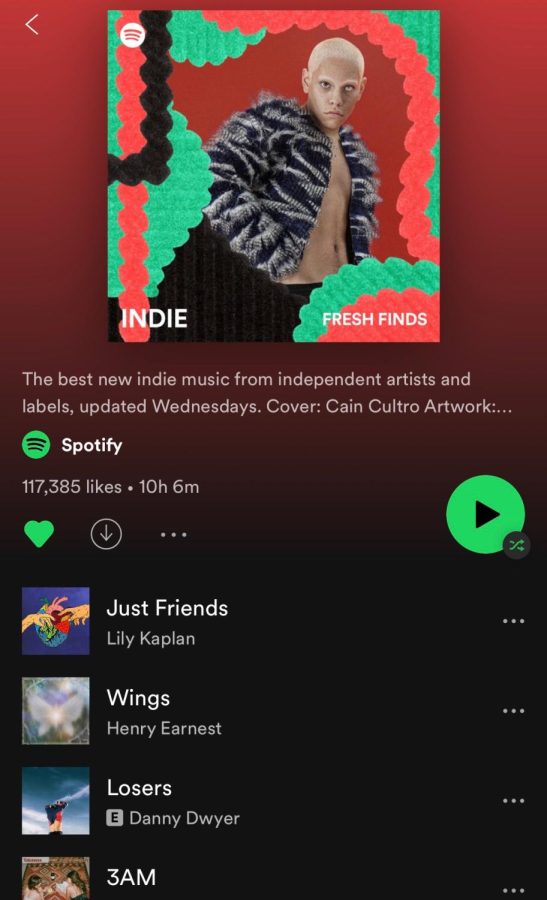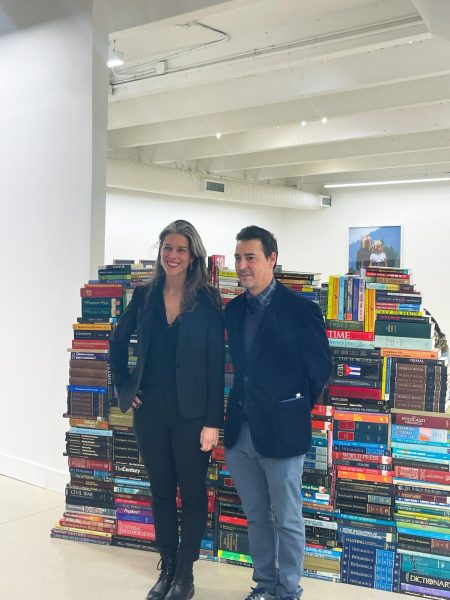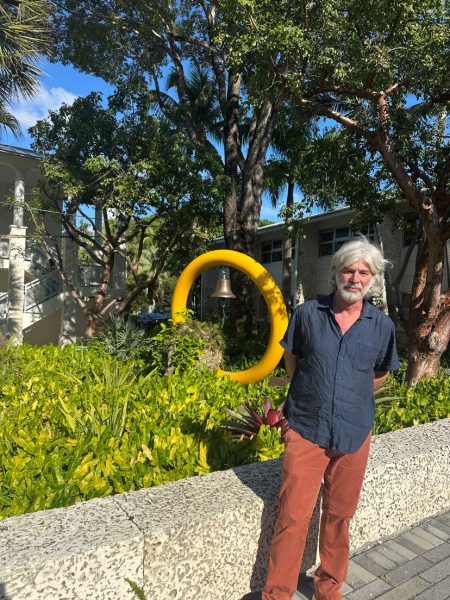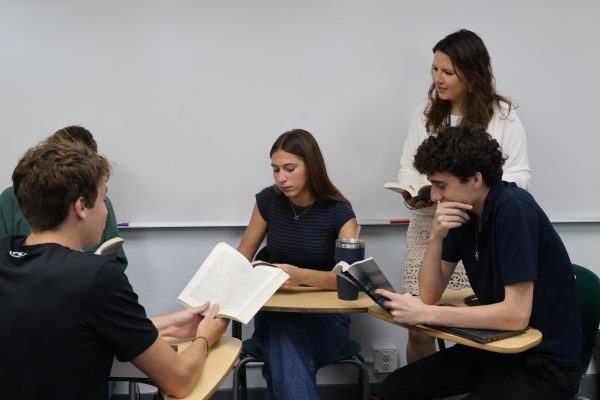How social media has changed the game for independent musicians
Kaplan’s single went viral after being featured on Spotify’s “Fresh Finds” playlist.
Singer Lily Kaplan ’22, a senior at Ransom Everglades, has recently made a name for herself in the music industry. Through her captivating and modern indie-style songwriting, she has quickly gained over 200,000 streams on Spotify after only her second released song, “Just Friends,” gained traction by getting placed as the top spot of Spotify’s Fresh Finds playlist.
Kaplan’s success represents a contemporary shift in the music industry. Before TikTok and other social media platforms, Kaplan would have had to rely on record labels to become famous. Since the creation of social media, however, the opportunity for independent artists like Kaplan to self-market has eased their path to fame.
Sammy Gonzalez, owner of The Bull Productions and founder of Young Musicians Unite, a non-profit organization that provides free music education to over 30 schools across Miami, gave some insight on this topic. He explained how before social media, record labels determined an artist’s success. “If you wanted to have exposure and wanted to make it, you had to go through the record label. They had a monopoly on everything, and without them, you just couldn’t do it,” he said.
“They would give you a loan, get you dressed up for photoshoots, music videos, make sure you got on MTV, got played on the radio, and without that you couldn’t make it. It was impossible,” he continued. For some artists, the conditions laid out in their contract meant that they had to give up the rights to their music, time, and even lives in order to get famous.
Now, the game has changed.
Social media has practically eliminated the need for a record label to make it big. An artist can market their music simply by posting the catchiest snippet of their new song and hoping that #MusicTok will blow it up. Once a song trends on social media, artists can expect that Spotify and other streaming platforms seeking profits will promote the song. The algorithms on social media, as well as streaming platforms, have effectively made social media an artist’s free record label, which has made independent artists more common than ever before.
As Gonzalez put it, “now people can literally be in their bedroom, set up a recording studio for 30 grand, have enough gear, record in their house. It’s not fancy, but it works. [They can] put it out themselves, and market themselves. Before, you needed a million dollars but now you can do it with 10, 20 grand. Just look at Billie Eilish.”
To be clear, independence is not necessarily anything new. Since the rise of digital and music-video platforms such as VEVO and MTV in the 1980s, artists have used independent record labels to escape the confines of record labels and to be more adventurous with their music. This gave birth to the “indie rock” genre, which covers bands such as The Strokes and The Smiths. In 2007, Radiohead released their album In Rainbows using a “Pay What You Want” method, allowing fans to choose if they wanted to give the band money. The band received essentially the same amount of money as they would’ve if they had used a label. More recently, Kanye West and Frank Ocean have taken on the record label industry, and talented artists like Rex Orange County, Mac Demarco, and Chance the Rapper have become big names on their own.
However, what distinguishes newer independent artists from older ones is that social media has reshaped consumer demands for what music is profitable, leading to a lack of what some might call ‘quality control.’ As Kaplan put it, “[Social media] has changed the way that music is structured, and it has changed the way that listeners are trained.”
Although Kaplan explained that her own songwriting has not been influenced by this change, she acknowledged that many artists capitalize on the fact that, because of TikTok, most listeners are “just waiting for that catchy, poppy chorus,” which has made music often templated and formulaic.
Kaplan explained that aside from a few exceptions, it is rare to find an artist that can successfully take control of their music without the help of a label, which has made artists focus more on creating hit singles rather than crafting holistic LPs.
The other downside of the new path to fame through a single catchy chorus is that it’s even harder to stay on top. The number of musicians accessible to listeners at any given time has skyrocketed because of streaming platforms such as SoundCloud, which forces artists to continually work to stand out. As Kaplan put it, “The issue is that when you have one thing that completely takes off, chances are, it’s not gonna happen again for you. That happens out of luck from an algorithm, and you can’t ensure that that algorithm will work again.”
After a song goes viral, artists are pressured to release another song that is perceived by listeners to be even catchier, which is out of the artists’ hands. One-hit wonders are more common than ever in today’s industry.
Overall, social media has brought many upsides to the music industry. Artists can create and share their music easier and more freely than ever before. They no longer need to sign deals with labels, giving up most of their profits. “Artists have even started to sign deals for 50/50 splits, which is unheard of,” said Kaplan. There is no question that talented musicians will continue putting out enjoyable music regardless of the state of the industry. But what will end up being those artists’ main source of income? Is the self-produced path here to stay, or will labels adapt to the changing industry and make a comeback?






